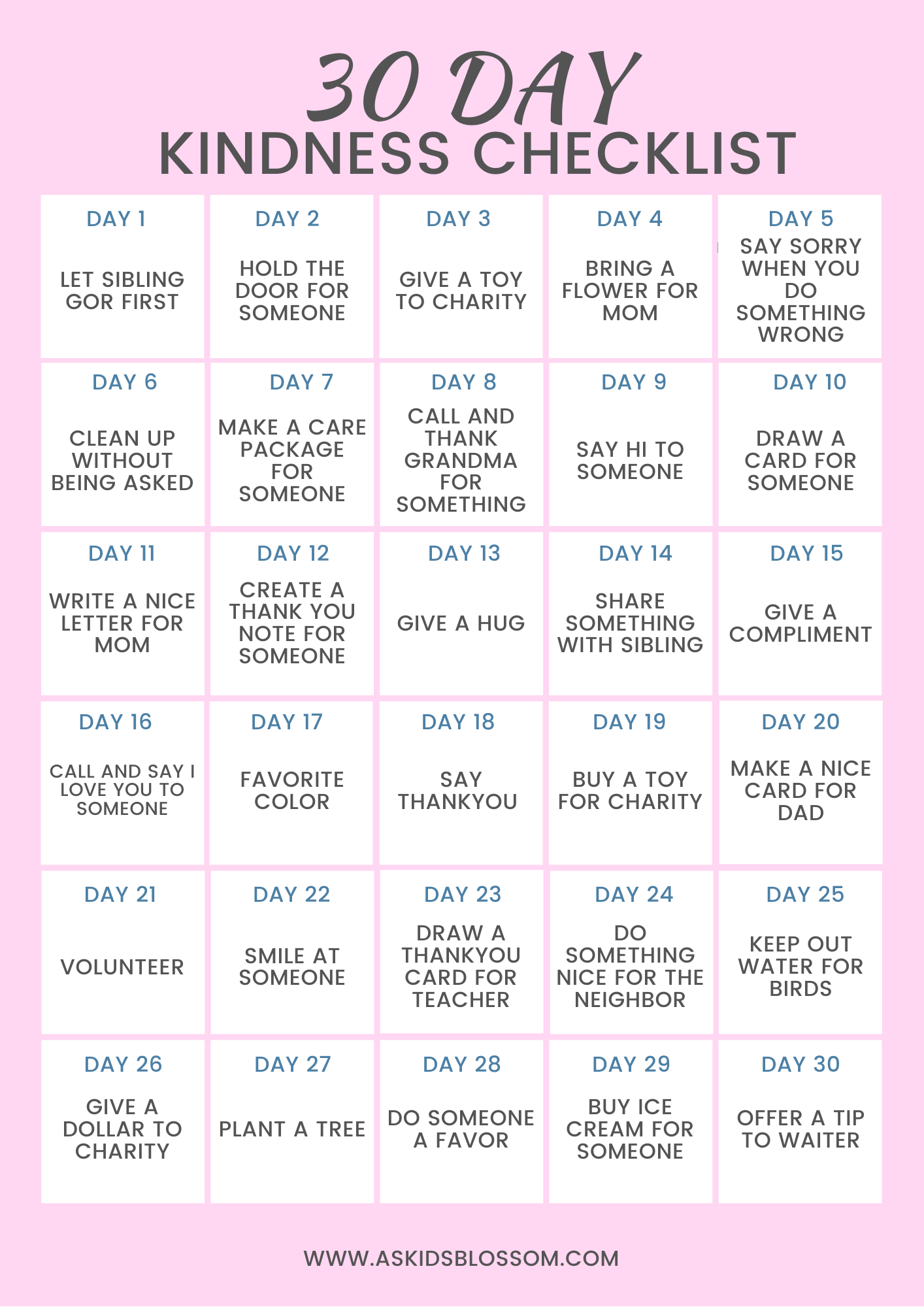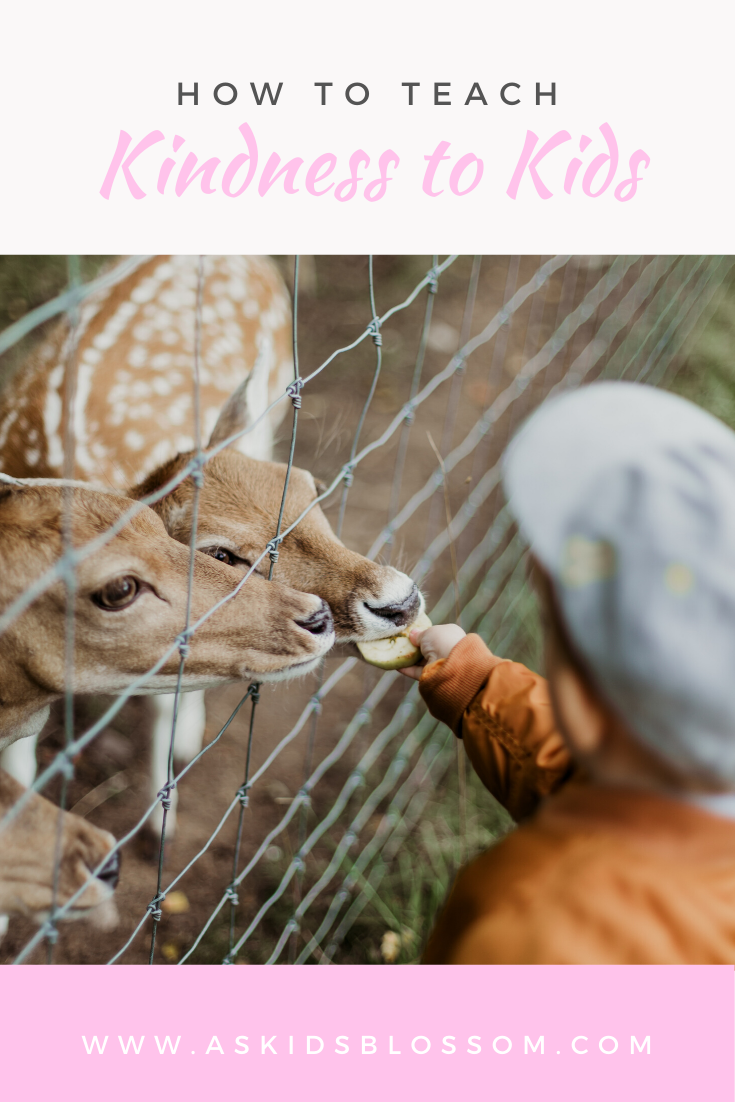A newborn child has the potential to be the kindest and most empathic kid. When a child is born, he is the kindest, wisest and most curious creature in the whole world. Human beings are God’s most precious creatures.
A child has an inbuilt kindness in his soul. When teaching kindness to kids we only need to give it room to grow and flourish.
How to teach kindness to kids
As a parent, you don’t need to work on him rather you need to work on yourself. Assess and work on yourself. And you will see that you don’t need to push him to be kind, he will be following your example in no time.
Before you teach kindness and empathy to your child, aim to be more kind and empathic yourself:
Be the model
Be the best model for your child. Do you make fun of others? Do you backbite? Do you get mad easily and treat people with disrespect? Well! Then you are teaching your child just that! Because your children will follow your example and not your advice.
Even if you need to direct your kids, there must be respect in your words, tone, and body language so that they learn from your behavior.
Talk About Emotions
As we discussed earlier there is a lot of potential in a child. He thinks and feels, we only need to trigger this movement for others through questions. This is one of the most powerful tools to educate a child towards empathy. When a child is small you could pretend play and ask him questions when a toy falls down or breaks; what do you think it feels right now? Or how can we help it? These questions build empathy in a child and he is able to understand other people’s emotions.
Don’t Tease Your Child
Many times we tease your child, thinking it’s fun. If he is annoyed, he probably doesn’t think it is fun. If your child cries or shows anger when you are teasing him, it means that he feels disrespected. You might not feel but it is a form of bullying.
Imitating him or making fun of him will make him learn the same behavior. Some people think that teasing a child will toughen him up but that’s not the case. Whatever you do at home is the norm for him. For him, teasing is normal. So, when you tease him, you are indirectly telling him that it’s okay to tease others.
Help others
This is human nature that we feel nice while helping others. It feels good to be of use to people who are in need. To maintain this humane quality we as parents need to set an example for our children.
You can make food for your sick neighbor and let the child know of your intentions. Help someone carry their grocery bags. Holding a door open for someone is also a kind gesture. Smile at a stranger. Every day, make sure you do at least one thing to help someone else. Even small gestures like these will form the building blocks for a kinder and more empathic soul.
Rude talk
When teaching kindness to kids don’t talk rudely to your child nor let the child talk rudely to you. Polite words and tones start at home. Be gentle and talk gently. Sometimes parents start screaming when they hear their child crying because they can’t stand the noise. It happens, but don’t let this become the norm in your house.
Children are loud because they are learning to control their emotions and it requires your patience. Whenever he feels angry or lost, first be gentle with your tone and ask questions related to his behavior. Why does he feel like that? What wrong he thinks has happened? What other ways he could have shown his anger rather than screaming or throwing things. He may express loudly but you always need to remain calm and ask questions to make him think of other ways to express. First of all, he will learn from your gentle behavior and secondly, it will make his mind work towards other options.
Be kind
Be kind to everyone. Be kind to your children, your spouse, and your extended family. Be kind to animals and mother nature. And don’t forget yourself. Be kind to yourself.
Call your family to share kind words with them. Give your child your candies. Give your body adequate sleep and rest. Be kind to the environment. Encourage him to eat plant production (vegetable and fruits) rather than plant production (chips and biscuits), to reduce your part of the carbon footprint. Walk or cycle to the park rather than using cars. Put water and food for the little birdies or stray cats outside your home, to help them survive. Everyone has a different way of showing affection and kindness, you just need to notice and encourage.
Here’s a kindness challenge you can do with your kids. We recommend you do it together.

I hope this article will help you in teaching kindness to your child. If you notice your child struggling and these strategies aren’t helping, I would love to help you determine your child’s individual needs. Please reach out to set up a free consultation. We are here to support you as you help your child blossom!
If you have any ideas on teaching kindness to kids, please join us in our FREE Facebook community!
If you enjoyed reading Teaching kindness to kids, you might also enjoy reading:
5 Simple Tips for Managing Your Toddler’s Mood Swings
Anxiety in Children: Symptoms, Types and Care
